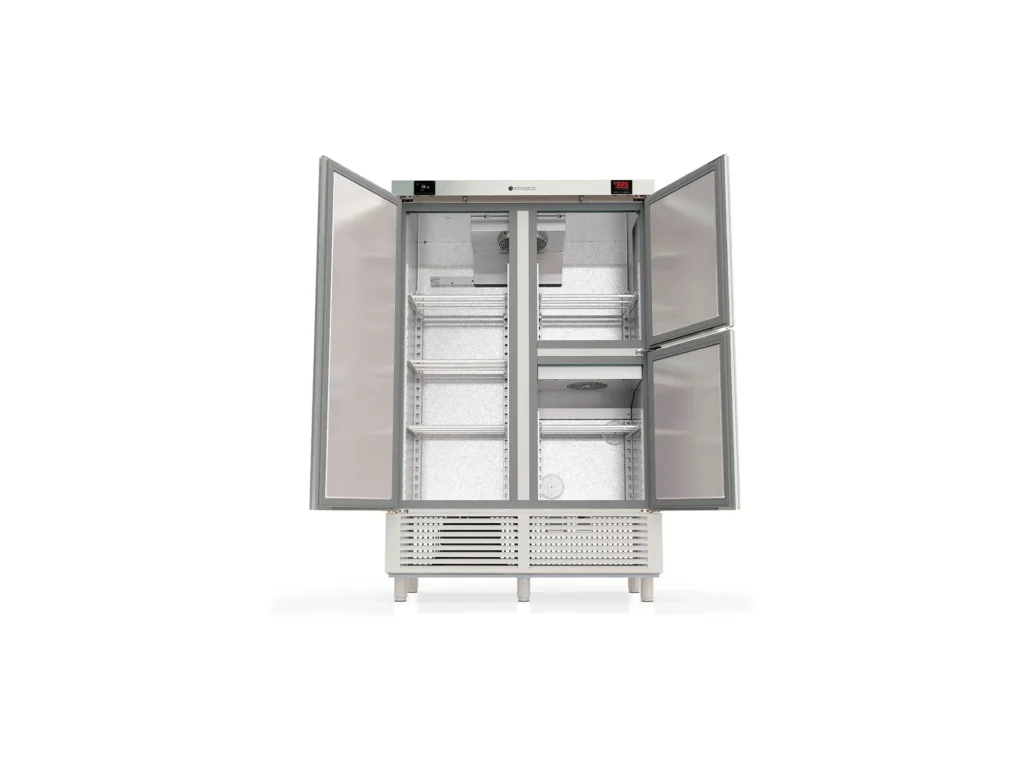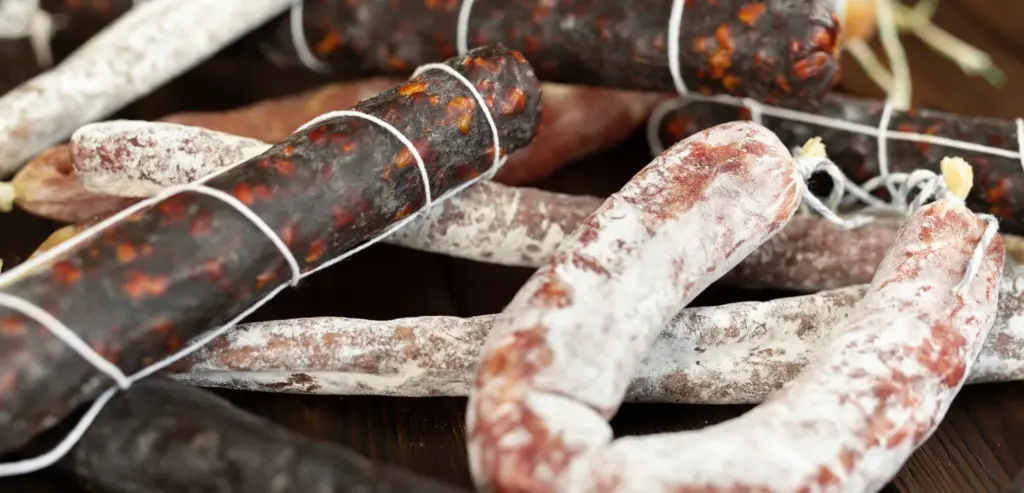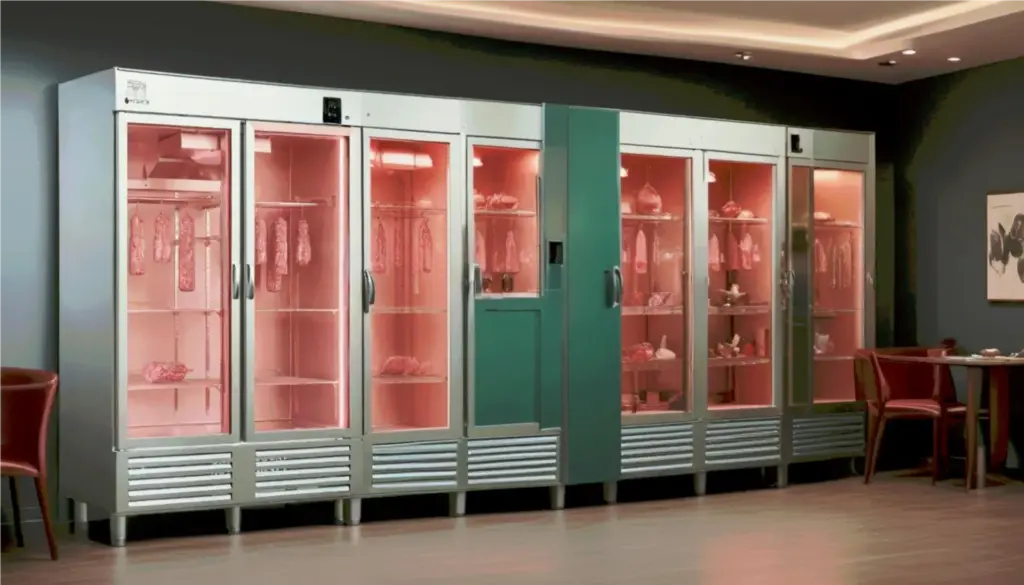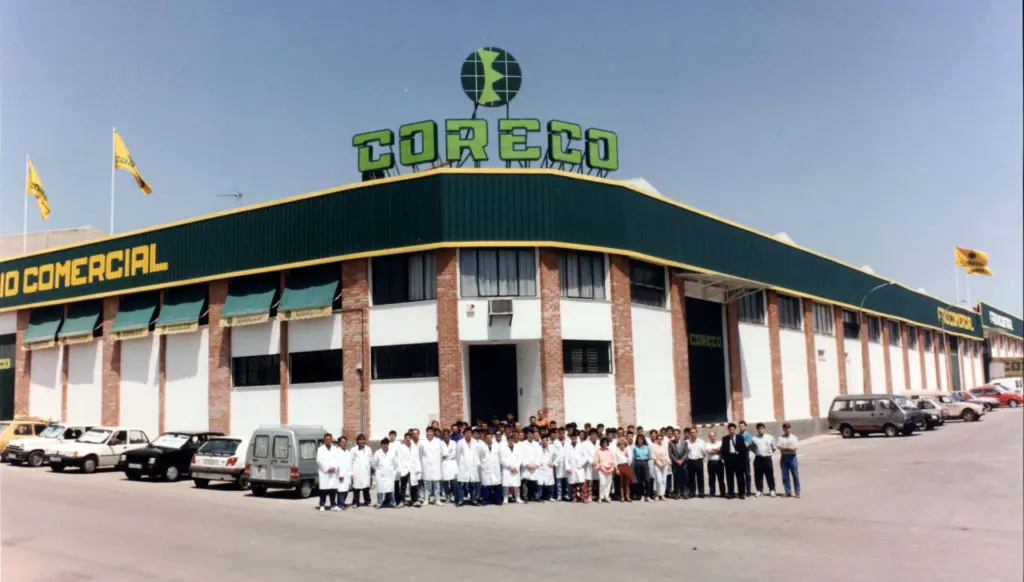Hello again. In the charcuterie and sausage industry, the drying is a fundamental process that can make a difference in the quality of the final product. Traditional methods used to be carried out in the open air or in natural chambers, where factors such as temperature and humidity were left to environmental conditions or ancestral techniques. However, in recent decades, the drying cabinets have revolutionised the way sausage producers control this process.
The question arises: which option is better for drying sausages? In this article, we will look at the differences between traditional methods and the use of refrigerated cabinets, highlighting the benefits and limitations of each.
Sausages: Drying cabinets or traditional methods?
1. Drying sausages: A delicate process
The sausage drying is a key stage in the production of products such as chorizo, salami, cured ham, among others. During this process, the sausages are subjected to a controlled environment for enzymes and beneficial bacteria to break down proteins and fats, developing the characteristic flavours, texture and colour of the final sausage.
The key factors influencing the drying of sausages are temperature, humidity and airflow. Without proper control of these elements, sausages can dry too quickly or too slowly, develop undesirable moulds, or even become unsafe for consumption due to the growth of harmful bacteria.
In traditional drying methods, these factors were managed naturally, taking advantage of the climatic conditions where the sausages were produced. With modern refrigerated cabinets, however, producers have precise control over every aspect of the drying environment, resulting in more consistent and safer products.
2. Traditional drying methods: History and limitations
Traditional methods of drying sausages date back centuries. Sausages were hung in natural caves, drying rooms or cellars where the climatic conditions favoured gradual drying and the development of the characteristic flavours of each product. In regions such as Spain and Italy, charcuterie has been an art handed down from generation to generation, and many of the techniques used in drying have changed little over the years.
Advantages of traditional methods:
- Authenticity: Traditional methods are considered more "natural" and in many cases are associated with a handcrafted product that has great cultural value.
- Local microbiota: Sausages that are dried in natural environments can develop unique characteristics thanks to the local microbial flora, which can impart distinctive flavours to the product.
Limitations of traditional methods:
- Lack of precise control: The main disadvantage of the traditional methods is the uncertainty. Weather conditions can vary from day to day, which means that key factors such as temperature and humidity cannot be accurately controlled. This can lead to inconsistencies in sausage quality from batch to batch.
- Risk of contamination: Without precise control of temperature and humidity, sausages can be exposed to pathogenic bacteria growth and undesirable mould growth, posing a risk to food safety.
- Location dependency: Traditional methods require a specific environment with suitable climatic conditions for drying, which may limit production to certain regions or seasons.
- Variability of drying time: The drying process can take longer than desired if conditions are not favourable, which can lead to delays in production and increased operating costs.
3. Refrigerated cabinets: technology at the service of drying
The refrigerated cabinets have revolutionised the sausage industry by offering complete control over the factors that influence drying. This equipment allows the precise regulation of the temperaturethe humidity and the air flowThe system provides an ideal environment for the sausages to develop evenly and safely.

Advantages of refrigerated cabinets:
- Precise control: Refrigerated cabinets allow every key parameter of the drying process to be adjusted, ensuring consistent results from batch to batch. This eliminates the uncertainty of traditional methods and minimises the risk of variations in the quality of the final product.
- Food security: By maintaining controlled drying conditions, refrigerated cabinets reduce the risk of contamination by harmful bacteria. Temperature and humidity levels can be adjusted to prevent the growth of pathogens, ensuring that sausages are safe for consumption.
- Optimisation of drying time: Refrigerated cabinets make it possible to shorten drying time without compromising product quality. By providing a constant and stable environment, sausages can mature faster than in traditional methods, which improves the operational efficiency of professional kitchens or deli factories.
- Flexibility in location: With refrigerated cabinets, producers are no longer limited by the climatic conditions of a specific region. This allows sausages to be produced all year round, anywhere in the world, without being dependent on the seasons or the local climate.
Limitations of refrigerated cabinets:
- Initial cost: The investment in refrigerated cabinets can be considerable, especially for small producers. However, the long-term benefits, in terms of efficiency, food safety and waste reduction, often justify this investment.
- Loss of perceived authenticity: Some consumers may prefer sausages that have been produced by traditional methods, arguing that these products have a more authentic taste. However, technological advances have allowed refrigerated cabinets to mimic natural drying conditions, without compromising quality.
4. Comparison: Drying cabinets or traditional methods?
Below, we present a comparison The main factors that are relevant to the sausage drying process are highlighted in the following section.
| Factor | Traditional methods | Cabinets maturation |
|---|---|---|
| Temperature control | Limited by climatic conditions | Precise and adjustable control |
| Humidity control | Location dependent | Adjustable humidity for each type of sausage |
| Food security | Increased risk of contamination | Controlled and secure environment |
| Drying time | Can be prolonged and unpredictable | Faster and more efficient drying |
| Flexibility | Limited to certain regions/seasons | Consistent production at any location |
| Perceived authenticity | Increased perception of naturalness | Balance between tradition and technology |
5. Sustainability Impact: Waste Reduction and Energy Efficiency
Sustainability is a crucial issue in today's food industry. The cabinets of drying not only optimise the ripening process, but can also contribute to more sustainable practices.
- Waste reduction: Thanks to the precise control of the drying conditions, sausages produced in refrigerated cabinets are less likely to deteriorate or show defects, which reduces the amount of product discarded.
- Energy efficiency: Although refrigerated cabinets require energy to operate, modern models are designed to be energy efficient. These units use state-of-the-art technology to optimise energy consumption, thereby reducing their carbon footprint.
- Resource consumption: By being able to produce sausages all year round without depending on the seasons, producers can better manage resources and avoid production peaks that can lead to waste or excess production.
6. Coreco's advice: Betting on technology in the face of uncertainty
At Coreco GourmetWe firmly believe that technology offers a significant advantage over traditional methods in the drying of sausages. Although traditional methods have their place and are valued for their authenticity, the uncertainty associated with climate fluctuations and pollution risks cannot be ignored.
Our advice for sausage producers:
- Choose high quality drying cabinetsThe initial investment in good equipment pays off in the long run. An efficient refrigerated cabinet will allow you to have full control over the drying process, ensuring the quality and consistency of your products.
- Do not compromise food securityWith refrigerated cabinets, you can be sure that your sausages are drying safely, without the risk of contamination by pathogenic bacteria. This not only protects your customers, but also your brand reputation.
- Adapt technology to your processAlthough the technology may appear to be a contrast to traditional methods, many refrigerated cabinets are designed to mimic natural conditions drying process, striking a balance between tradition and modernity. Take advantage of the best of both worlds to create a high quality product.
- Optimise time and resourcesWith refrigerated cabinets, you can reduce drying time without sacrificing quality, allowing you to better manage your production and minimise waste.
- Consider the impact on sustainability: Using refrigerated cabinets not only improves efficiency in your production, but also contributes to more sustainable practices by reducing waste and improving the use of energy resources.
If you are looking to improve the drying process of your sausages with the latest technology, discover our advanced refrigerated cabinets at Coreco Gourmet.
Drying cabinets versus traditional methods: safe sausage maturation
The choice between traditional methods y refrigerated cabinets depends on the needs and priorities of the individual sausage producer. While traditional methods offer authenticity and a cultural heritage, traditional methods are not the same as traditional methods. refrigerated cabinets provide control, safety and efficiency, making them the best choice for those looking to optimise production and ensure consistent product quality.
At Coreco GourmetWe are committed to technology as the future of the charcuterie, offering innovative solutions that allow producers to improve their processes without sacrificing the quality and tradition that make their products unique. Thank you for joining us in this analysis!











